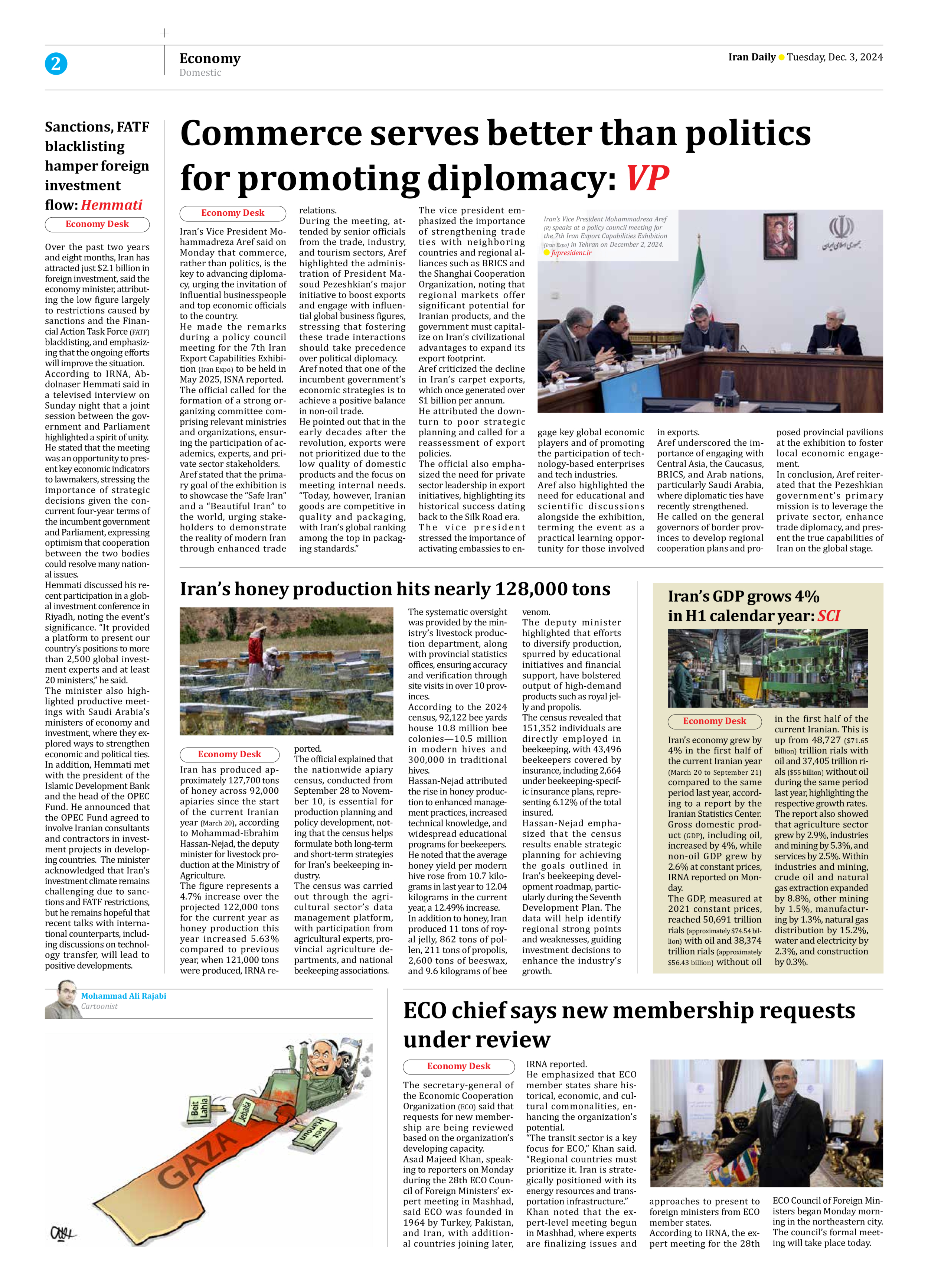
Commerce serves better than politics for promoting diplomacy: VP
Iran’s Vice President Mohammadreza Aref said on Monday that commerce, rather than politics, is the key to advancing diplomacy, urging the invitation of influential businesspeople and top economic officials to the country.
He made the remarks during a policy council meeting for the 7th Iran Export Capabilities Exhibition (Iran Expo) to be held in May 2025, ISNA reported.
The official called for the formation of a strong organizing committee comprising relevant ministries and organizations, ensuring the participation of academics, experts, and private sector stakeholders.
Aref stated that the primary goal of the exhibition is to showcase the “Safe Iran” and a “Beautiful Iran” to the world, urging stakeholders to demonstrate the reality of modern Iran through enhanced trade relations.
During the meeting, attended by senior officials from the trade, industry, and tourism sectors, Aref highlighted the administration of President Masoud Pezeshkian’s major initiative to boost exports and engage with influential global business figures, stressing that fostering these trade interactions should take precedence over political diplomacy.
Aref noted that one of the incumbent government’s economic strategies is to achieve a positive balance in non-oil trade.
He pointed out that in the early decades after the revolution, exports were not prioritized due to the low quality of domestic products and the focus on meeting internal needs. “Today, however, Iranian goods are competitive in quality and packaging, with Iran’s global ranking among the top in packaging standards.”
The vice president emphasized the importance of strengthening trade ties with neighboring countries and regional alliances such as BRICS and the Shanghai Cooperation Organization, noting that regional markets offer significant potential for Iranian products, and the government must capitalize on Iran’s civilizational advantages to expand its export footprint.
Aref criticized the decline in Iran’s carpet exports, which once generated over $1 billion per annum.
He attributed the downturn to poor strategic planning and called for a reassessment of export policies.
The official also emphasized the need for private sector leadership in export initiatives, highlighting its historical success dating back to the Silk Road era.
The vice president stressed the importance of activating embassies to engage key global economic players and of promoting the participation of technology-based enterprises and tech industries.
Aref also highlighted the need for educational and scientific discussions alongside the exhibition, terming the event as a practical learning opportunity for those involved in exports.
Aref underscored the importance of engaging with Central Asia, the Caucasus, BRICS, and Arab nations, particularly Saudi Arabia, where diplomatic ties have recently strengthened.
He called on the general governors of border provinces to develop regional cooperation plans and proposed provincial pavilions at the exhibition to foster local economic engagement.
In conclusion, Aref reiterated that the Pezeshkian government’s primary mission is to leverage the private sector, enhance trade diplomacy, and present the true capabilities of Iran on the global stage.







